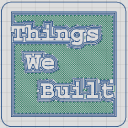The Final Countdown: A Melodic Send-Off As the countdown to Pi Wars 2024 reaches its final moments, Team CyberWar stands at the precipice of a journey that has been as exhilarating as it has been enlightening. Today, we share not just another milestone in our saga but a testament to the creativity, technical prowess, and sheer determination that has propelled us forward: our artistic and technical video submission.
The Rhythm of Resilience In a fusion of technical merit and artistic expression, we’ve created a video that does more than showcase our robot’s capabilities; it captures the spirit of our team and the adventure we’ve embarked upon.
Serial Saga: Decoding the Mystery Byte In the vast and intricate world of robotics, every byte matters, and a single misbehaving bit can lead to days of troubleshooting. Our recent odyssey with the SerialTransfer library, is a testament to the meticulous nature of debugging complex systems. This post recounts our journey through the frustrating, yet ultimately enlightening, process of identifying and resolving a bug that nearly stymied our project’s progress.
Pinpoint Precision: Choreographing Our Robot’s Every Move Localization is the linchpin of autonomous navigation, allowing robots to discern their location and navigate complex environments. Our journey in Pi Wars leverages advanced localization techniques to surmount various navigational hurdles.
The Localization Landscape Odometry serves as our primary gauge of movement, albeit with a caveat—accumulating errors. It’s a straightforward reflection of motion but requires correction over distance.
Landmark Navigation Landmark navigation relies on recognizable features within the environment to determine a robot’s location.
Navigating the Future - Milestone Achievement in Waypoint Navigation Charting New Paths We’ve hit a significant milestone in our journey towards Pi Wars domination: the successful implementation of advanced waypoint navigation. This breakthrough allows our robot to traverse a series of predefined x,y points with precision, marking a leap forward in our strategy for overcoming the Minesweeper, Lava Palava, and Escape Route challenges.
Speed and Precision: A Balancing Act One of the standout enhancements in our latest navigation code is the ability to set different speeds for each waypoint.
This week, we’ve been learning about the SOLID principles of software. When I say we, I mean I (Mark) have been learning, and Rob (the professional computerman on our team) has been suggesting videos and other resources, and helping clarify bits I’ve not understood. My take on the SOLID principles, in the context of a Pi Wars robot’s software is:
S: Single Responsibility Principle (SRP) Each component of the code (function, class or whatever) should have one job.
Mastering Robot Software Structure for Beginners Navigating the intricate world of robot programming can be a daunting journey, especially when deciding how to structure your code for feedback, control, and update rates. Here, we dive into the essentials, blending expert advice with practical experiences to guide beginners through the complexities of robot software architecture.
Understanding Update Rates and Task Scheduling Update Rate Considerations: Sensors: Typical sensors update at 10-30Hz, which translates to data every 33-100ms.
